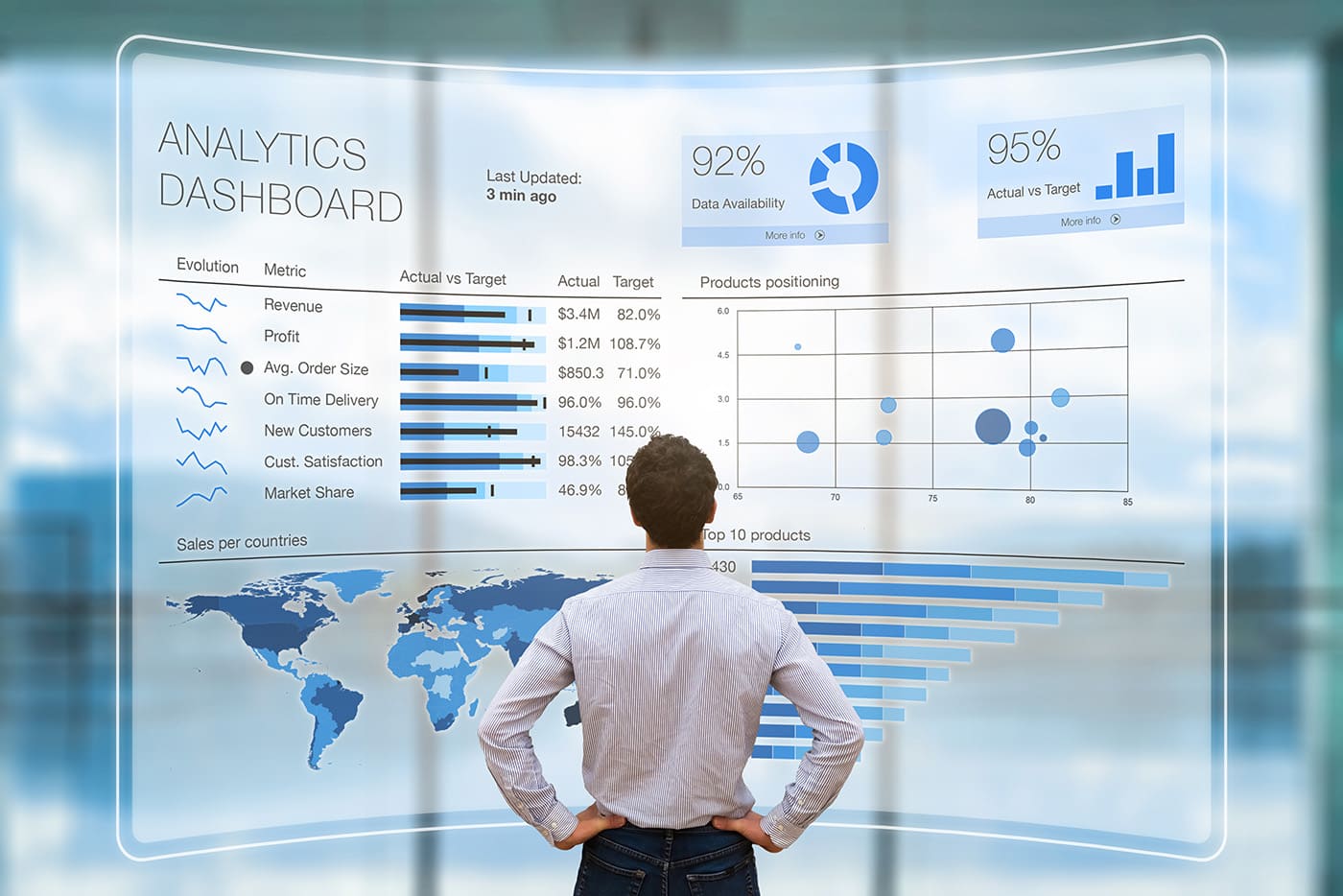Beyond Dashboards: The Future Of Analytics And Business Intelligence?
16 November 2022
Analytics and business intelligence (BI) have long been understood to be fundamental to business success. Today, powerful technologies, including artificial intelligence (AI) and machine learning (ML), make it possible to gain deeper insights into all areas of business activity in order to drive efficiency, reduce waste and gain a better understanding of customers.

Why then, isn’t every company doing so? Or, more importantly – why aren’t they doing so successfully?
Truly benefiting from analytics – particularly the most advanced and powerful analytics techniques involving AI – requires developing a top-to-bottom culture of data literacy throughout an organization and this, in my experience, is where many businesses are still failing. This is highlighted by one particular statistic that came up during my recent webinar conversation with Amir Orad, CEO of Sisense.
Orad told me that according to his observations, 80 percent of employees in the average organization simply aren't leveraging the analytics that, in theory, are available to them. It’s true that leadership teams and certain functions, such as marketing and finance departments, have spent recent decades getting to grips with reporting and dashboard applications. The same, however, often isn’t true of frontline staff and many of the professionals whose job it is to manage the day-to-day operations and service delivery of organizations and enterprises.
Orad tells me, “This market has matured a lot … and the BI teams and analysts are now getting really valuable tools at their disposal … the challenge is the rank and file.
“The people that operate the actual organizations haven’t leveraged the power of ML and AI because it’s very detached from their day-to-day.
“We’ve solved the first-mile problem – the c-suite, marketing, sales. We've not solved the last mile problem, which is the wider adoption, and that's where we believe there's a massive opportunity, not only to get adoption … but also to really move the needle on the impact of BI and AI in many organizations."
When paying attention to the role that analytics plays in the modern enterprise, it often becomes clear that it’s the reporting and dashboarding approach itself that is behind many of the bottlenecks which, in turn, act as obstacles to holistic deployment and rollout of “top-to-bottom” analytics.
Here’s the problem – analytics and data science teams often find themselves forced to spend time creating tools, applications, and dashboards that will only ever be accessed by the 20 percent of the workforce for which analytics is an accepted part of their role. The marketing, finance, and sales teams, and the business leadership units, for example. These users are accustomed to their siloed datasets which, although they know they can derive insights from, are not available across the workforce as a whole in a way that “new thinking” can emerge. This prevents new, potentially even more valuable use cases from being able to “bubble up” to become part of the corporate data strategy.
This is a hindrance to the “democratization of data” that we know is vital to address if organizations are going to unlock the true value that data can bring to their organization. Put simply – data and the insights it contains are far too valuable to be kept locked away in the “ivory towers” of data scientists, the c-suite, and the few rarified environments where it is already put to use.
Orad says, "People don't want to use BI. People want to run better businesses and give better service to customers.
“They don’t want to dashboard – they’re just a way to make better decisions and better outcomes – the goal is not more dashboards and more AI, it’s how do we get the insights into the hands of the right people at the right time.”
Failing to address organizational data strategy challenges from this angle is a surefire way to end up in the "data-rich, insight-poor" situation that is holding so many organizations back today.
“The best way to make an impact is to embed the insights you need at the right place at the right time – not in a separate screen where you have to log in and see a nice chart and dashboard, etcetera,” Orad says.
So what does this look like in practice? Well, in ideal terms, what it means is delivering insights, in real-time, directly to the operational systems as they are being used. In other words, doing away with the data science dashboarding models we've become accustomed to and rethinking the way analytics – or rather insights – are delivered directly to those who need them at the right time.
For example, imagine you are making Youtube videos with the purpose of building an audience and establishing your authority within your niche – a straightforward marketing tactic that's put to work by thousands of businesses all around the world every day.
In theory, using AI, it would be possible to harness the power of natural language processing (NLP) and image recognition, along with the deep audience analytics available today, to receive feedback in real time about who is going to be interested in your content, whether you are speaking too fast or too slow, whether your images and graphics are going to work when it comes to engaging people who you want your message to reach – and any other tactical or strategic objective you might have.
In healthcare, a doctor monitoring a camera during an operation or observational procedure could receive real-time feedback on what they are seeing inside a patient's body and suggestions about possible diagnoses or next-step procedures.
In an industrial or manufacturing environment, engineering staff on the ground can receive real-time insights into which pieces of machinery are likely to break down or require maintenance, meaning they can schedule preventative measures and potentially avoid expensive downtime altogether.
It could even work in an educational setting, Orad suggests, with a teacher receiving real-time feedback on which of the students in their class are fully engaged with their learning and which are in danger of failing assessments or dropping out.
Among the examples Orad gave me of occasions where he has seen these principles put into action, one very different one stood out – a charity organization that operates a crisis line connected to a phone number on San Francisco’s Golden Gate bridge. Signs at various locations on the bridge prompt users to call the crisis line if they are having negative thoughts while on the bridge. The organization running the phone line then uses machine learning-driven predictions to monitor the calls in real-time and help the operators point the callers toward the advice and information that's most relevant to their specific situation. “It’s augmenting the human with options or suggestions to give a better service … and literally save lives,” Orad tells me.
“Giving me a report once a month about what could have been done better, or asking the person on the phone, 'wait on the bridge, let me log into the dashboard and get some insights', it doesn’t make sense.”
It’s true that it’s easier than ever to drag insights out of data, and thanks to the proliferation of cloud services and analytics platforms, just about any organization can leverage technology to make better predictions and decisions. As technology continues to evolve, however, it’s quickly becoming clear that putting real-time insights in the hands of the people who are best placed to use them is the crucial "last mile" that stands between businesses and the ability to derive real growth and value from data.
You can click here to watch my webinar with Amir Orad, CEO of Sisense, in full.
Related Articles
Dreamforce 2025 Proved The Agentic Enterprise Has Arrived
By now, “smart” versions exist of just about every home appliance, gadget and gizmos we can think of. However, manufacturers continue[...]
The Top 5 Technology Trends For 2026
By now, “smart” versions exist of just about every home appliance, gadget and gizmos we can think of. However, manufacturers continue[...]
Sign up to Stay in Touch!
Bernard Marr is a world-renowned futurist, influencer and thought leader in the fields of business and technology, with a passion for using technology for the good of humanity.
He is a best-selling author of over 20 books, writes a regular column for Forbes and advises and coaches many of the world’s best-known organisations.
He has a combined following of 4 million people across his social media channels and newsletters and was ranked by LinkedIn as one of the top 5 business influencers in the world.
Bernard’s latest book is ‘Generative AI in Practice’.






Social Media